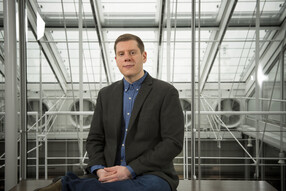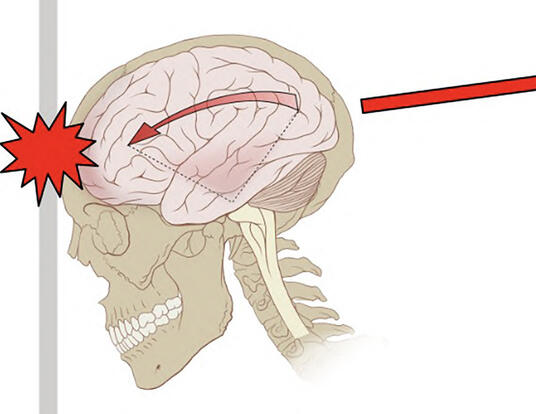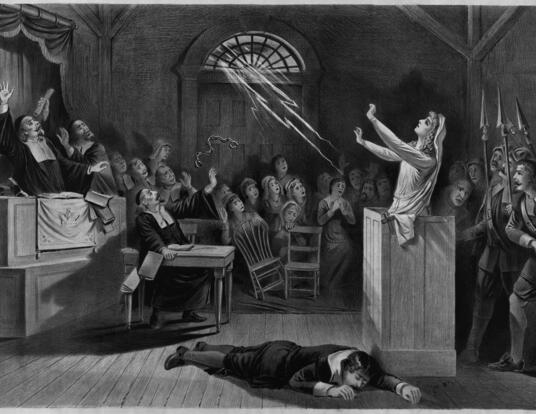Hello, you've reached. . . Manila?
One jetlagged night in Manila leads PhD candidate Justin Stern into the world of business process outsourcing.

A few years ago, Justin Stern had finished up his master’s thesis on housing in South Korea and wanted to try something new. So he flew to the Philippines, landed in Manila, and was really excited to get out and explore the city as he got over his jet lag. He soon discovered that he had accidentally landed in a part of the city that was as wide awake as he was. The reason? He'd landed in a part of Manila dedicated to business process outsourcing -- an industry that has changed everything in Manila, from the skyline to the way that some families celebrate Christmas.
Listen Now
Interview Highlights

"I woke up the next morning at about 2:00 a.m. I looked out my window and there seemed to be a lot of activity happening outside. So rather than just kind of lie in bed. . . I decided to go out for a walk. And I walk outside the hotel, and it was more vibrant than when I checked into the hotel at 5:00 or 6:00 in the afternoon. There is a traffic jam at 3:00 in the morning. There are people lined up outside of Starbucks drinking coffee. And I really had no idea what was happening at first until I went up to a group of people, they were eating outside, and I just asked them, "Excuse me, but why are so many people out eating dinner at 2:00 or 3:00 in the morning?" And they all they all laugh at me and they say, "we're not eating dinner we're eating lunch!"
"This is a symptom of capitalism: there are booms and there are busts. But if you think about, say, New York City. . . My dissertation advisor lives in a loft in SoHo, which used to be a part of the Meatpacking District and then was an art loft and now is a place that he lives in – an overpriced condominium in New York. When you look at the kind of spaces that this industry is now generating in the Philippines, it becomes much more difficult to imagine other uses that it would easily lend itself to."
See Justin Stern talk about Eastwood City and outsourcing at Harvard Horizons 2018.
Full Transcript
Anna Fisher-Pinkert: I’m Anna Fisher-Pinkert. For the next few episodes, we’re exploring the secret life of cities. We’re going to start with Justin Stern, a 6th year PhD student in Architecture, Landscape Architecture and Urban Planning – which is offered through the Graduate School of Arts and Sciences and the Graduate School of Design here at Harvard.
Justin Stern: I'm a dual citizen in many ways.
AFP: A few years ago, Justin had finished up a master’s thesis on housing in South Korea and he thought, "Ok, let’s try something new." So he flew to the Philippines, landed in Manila, and was really excited to get out and explore the city. Just as soon as he got over his jet lag.
JS: I was so exhausted I went to bed straight away, which is so often the case when you’re traveling halfway around the world from Boston. I woke up the next morning at about 2:00 a.m. I looked out my window and there seemed to be a lot of activity happening outside. So rather than just kind of lie in bed and check emails and count sheep and try to fall back asleep, I decided to go out for a walk. And I walk outside the hotel and the neighborhood where I was staying was more vibrant than when I checked into the hotel at 5:00 or 6:00 in the afternoon. There is a traffic jam at 3:00 in the morning. There are people lined up outside of Starbucks drinking coffee. And I really had no idea what was happening at first until I went up to a group of people, they were eating outside, and I just asked them, "Excuse me but why are so many people out eating dinner at 2:00 or 3:00 in the morning?" And they all they all laugh at me and they say, "We're not eating dinner we're eating lunch!"
AFP: Justin thought, lunch?? But they said:
JS: "We work on American time. We're on our lunch break, and that's our office." And they just pointed up to a building. The top had the logo for Dell Computers. And then I start looking around this district. At the top of all the buildings you see Citibank and Accenture, Convergence, and a handful of other familiar corporations. It kind of just suddenly hit me that all of this is an outsourcing district and that all of these people work in call centers.
AFP: Turns out that Justin had accidentally wandered into the heart of Eastwood City – a district inside Manila that looks completely different than the rest of the city. So when you call Citibank to get help with your credit card, the person who answers the phone could very well be sitting at a desk in Eastwood City. To understand what Eastwood City is all about, you have to know about this term: BPO, or “business process outsourcing,” which is a fancy way to say:
JS: Business functions that were traditionally or previously done in the United States, or even within like a corporate headquarters, that have since been sent elsewhere in the world or in the United States.
AFP: One example of business process outsourcing is customer service call centers.
JS: Think of any big company, like Bank of America, for example, most likely had its phone customer service call centers inside the corporate headquarters. And then eventually there's this kind of first wave of outsourcing where these offices these subsidiary offices that don't necessarily need to be within the corporate headquarters are moved elsewhere often where labor is cheaper where accents are neutral where they can reduce costs. So the first wave of outsourcing you have call centers moving to places like Minnesota.
AFP: Eventually, these call centers moved abroad to places where labor was even cheaper – like India and the Philippines. So, why are there so many call centers in the Philippines?
JS: So there are a lot of different ways to answer that. The most important explanation is that a significant number of people in the Philippines speak English. That's partially because the Philippines is a former American colony. And that's also because over the last few presidential administrations there has been a serious attempt to teach English in elementary school and so English is a fairly common language not just in schools but also just in daily life in the Philippines. But the larger explanation also has to involve India. India is the original kind of global hub for the outsourcing industry. A significant number of call centers are located in India. The Philippines sort of was discovered a little bit later as a really ideal place to outsource voice BPO.
AFP: The BPO industry as a whole is actually really important to the economy of the Philippines.
JS: Right now the industry is the fastest growing industry in the Philippines and it's the second largest contributor to GDP. 23 billion dollars annually, after remittances from overseas Filipino workers.
AFP: So, the largest contributor to GDP is actually from Filipino workers who are living abroad and sending money back to their families. But the BPO industry is growing – and it’s expected to overtake remittances from abroad in the next few years. So these call centers really shape the cities they’re in. In the Philippines, the call centers are built in special economic zones.
JS: So it's a special economic zone but it's a particular type of special economic zone known as an IT center.
AFP: In India, a special economic zone is generally far outside of the city center, and really only accessible to the people who work there.
JS: But what happens in the Philippines is that a single floor of a building can be a special economic zone, it can be an IT center, and the floors above and below it can be a part of the normal economy. And so this creates an opportunity for more diversified building stock and an opportunity to have significant amounts of retail on the ground floor or to have residential adjacent to it. And so really it's creating these new mixed use urban environments that are quite spectacular and quite ambitious in their size and scale.
AFP: And that’s what Eastwood City is.
JS: So Eastwood City is one of, it's actually the first, large IT centers that is primarily anchored by the BPO industry and in particular by customer service call centers. . . the inspiration kind of draws from Los Angeles and Barcelona I'd say.There are palm trees across the bottom two floors, you have bars and restaurants. You have high end shops like Uniqlo and Gap, which are high end shops in the Philippines.
AFP: There are fountains and sculptures surrounded by neatly paved paths and landscaping.
JS: And then you have call centers sort of towering above.
AFP: Zoom out, and Eastwood City looks really strange – like a weird urban thumb sticking out of a regular neighborhood in Manila. Outside, you have sort of average-size two or three-story buildings. Inside the IT center, there are these massive, modern towers. Outside Eastwood City, you can visit a street vendor and buy green mango skewers smothered in shrimp paste. Inside Eastwood City, you can go to Applebees and order a burger. Outside Eastwood City the streets are full of jeepneys – colorful trucks that take people to and from work. Inside Eastwood City, you’re only going to see taxis and sedans.
JS: There are only three real access points into this megaproject whether you're on foot or in a car. The site is secured, it's policed. There are walls that surround it. And so it's kind of, in many ways, this universe into unto itself.
AFP: That universe is pretty inaccessible to most people. Even for call center workers, who are by and large considered part of the middle class.
JS: If you're a call center agent you're making between 250, maximum 500, US dollars a month, and that generally wouldn't be enough to afford housing in one of these call center or new business districts. So, generally, people who work in this industry do one of two things. One, they live at home in which case they have significant commute where they're taking a variety of different transportation types - say a jeepney to a bus to a train or some variation of that - and commute between three and four hours a day.
AFP: The other option is to live in shared dormitories closer to work. But perhaps the biggest thing that separates Eastwood City workers from the rest of the city is time.
JS: So the most common work shift is from 9:00 at night to 6:00 in the morning And that’s just because there’s a 12 hour time difference between eastern standard time in the United States and local time in the Philippines.
AFP: So when I place a customer service call at 3:00 in the afternoon, a representative is picking up in Manila at 4:00 in the morning. And that has consequences for people who work in businesses around the call centers.
JS: I'll never forget the first day I visit and I was walking around Eastwood City. I saw an advertisement for Applebee's that advertised not one but two happy hours. There was a happy hour at 7:00 at night and there was another happy hour at 6:00 a.m. And this is when I was still putting the pieces together and figuring out this industry. And so there's a sort of scrambling of time that happens and in many of these districts it's not uncommon at all to see people out drinking with their friends eating You know what we would typically eat for dinner or eat at a bar like Buffalo wings at 5:00 or 6:00 in the morning.
AFP: But then that also means that there is a bartender who is employed at 5:00 or 6:00 in the morning, and a janitor, and a security officer. In metro Manila, 800,000 people work in the BPO industry – most of them in customer service call centers. Plus there are all those people with jobs that support the BPO industry. And that’s inside a metropolitan area of over 30 million people. It’s like there are two cities – a daytime Manila, and a nighttime Manila. So, on one of Justin’s visits, he decided to try the overnight shift. This time: on purpose.
JS: I spent the entire time on American time. So while I was there I would go to bed around 11:00 in the morning and I would wake up every single day at 6:00 p.m. I was there over Christmas and the Philippines is 50% Catholic and they take Christmas very seriously. And so I was out Christmas Day and Christmas Eve asking people about about the industry that they work in asking them how it felt to be working on Christmas Eve and how they would be celebrating with their family. And oftentimes they would have a brother or sister or at least a cousin who also works in the industry, who also works at night, and their families would begin to change when they celebrate holidays so that everybody can participate.
AFP: If a huge group of people in your city started working the overnight shift, how would that change the community that you live in? What would happen to childcare? To your local coffee shop? To traffic? To dating? And then, what if those night shift jobs disappeared?
JS: You can’t help but speculate on where this is all going, and what this industry will be like in 20 or 25 years. Many analysts suggest that in just the next few years employment in the industry will begin to plateau as advancements in AI and artificial intelligence and voice demand technology begin to replace a lot of jobs in the call center industry. So what does that mean for the city? What does that mean for office space? What does that mean for the over 1 million people who are employed in this industry? It raises just a lot of really alarming questions.
AFP: As an urban planner, Justin is also thinking about what this means for the built environment in places like Eastwood City. The buildings where the call centers are housed are specifically built to suit the BPO industry.
JS: There are a number of technical requirements but really the most important requirement is a very large floor plate on which hundreds if not over a thousand employees can be assembled. And one of the main reasons for this is that . . . if you can assemble a thousand call center agents on a single floor maybe 200 300 then you would only need one manager for that floor.
AFP: But if the BPO industry dries up, it isn’t clear what those giant empty floors would be used for.
JS: And so particularly about a decade ago when the industry was just growing and the real estate development community was figuring out how to meet its requirements, they sort of blew up the typical floor plate. Say there'd be one bathroom in one corner of the site or something like that. And these floor plates would be very difficult to partition. And if you can't partition it there are very few kind of you know users of office space that road that would require such a large floor plate. So it raises this larger question about the sustainability of the kind of urban planning and the kind of real estate development that this industry has generated.
JS: This is nothing new. This is a symptom of capitalism, there are booms and there are busts. But if you think about, say, New York City, my dissertation advisor lives in a loft in SoHo, I wish I could afford a place like that, which used to be a part of the Meatpacking District, and then was an art loft, and now is a place that he lives in – an overpriced condominium in New York. When you look at the kind of spaces that this industry is now generating in the Philippines it becomes much more difficult to imagine other uses that it would easily lend itself to.
AFP: When you talk about the Meatpacking District I'm guessing that the the meat packers in Soho didn't imagine that it would be a loft either. So it sort of seems like whatever is coming next is going to have to be really radically different than what we're seeing now in these urban environment.
JS: Right. In the Philippines a lot of people talk about climbing up the value chain. They talk about back-office accounting, human resources, certain aspects of the industry that can't be automated or would be more difficult to automate. But whether or not those aspects of the production cycle are located in the Philippines is anyone's guess. And the other thing that's really quite different about the age that we're living in today is just that the typical lifespan of a given industry, say the outsourcing industry, appears to be significantly shorter than comparable industries in the past. So if you think about the automobile industry in Detroit, Detroit had many many decades. There was an entire culture, a culture of civic philanthropy, that was cultivated through the expansion of that industry. Whereas in the Philippines, this industry has really only been around for the last two decades and it's only been a really significant player for about the last decade and a half or so. So there's also this larger question of just these industries that are changing faster than in the past.
AFP: So who gets to decide a city’s future? The decisions that were made in the Philippines – first to push the English language, then to allow special IT zones inside major cities – those had far-reaching consequences. Next time on Veritalk: we’re going to ask who gets a say in your city’s future, and why.
Elijah de la Campa: Potholes not only tell you about the state of your infrastructure, they tell you about the nature of participation in your city. And that, to me, is really fascinating.
AFP: Next time on Veritalk: What can we learn from potholes?
If you want to hear more from Justin Stern, there’s a great video of him talking about Manila at Harvard Horizons - a really cool event where Harvard PhD students talk to the public about their research. You can find that video, along with more episodes of Veritalk, at gsas.harvard.edu/veritalk.
Don’t forget to subscribe to Veritalk on your favorite podcast app. Make your friends subscribe. Make your mom subscribe. We love new listeners.
There’s another cool story about changing cities over on the podcast This Week in Health from the Harvard TH Chan School of Public Health - I spoke to Augusta Williams about cities, heat, and climate change. Visit hsph.me/thisweekinhealth to listen to that episode.
Veritalk is produced by me, Anna Fisher-Pinkert.
Our sound designer is Ian Coss.
Our logo is by Emily Crowell.
Our executive producer is Ann Hall.
Special thanks this week to Justin Stern, the Harvard Graduate School of Design, Anne Brown, and Graham Ball.
The sound we heard from Manila was recorded by Kevin Luce, whose work you can find at www.freesound.org
Get the Latest Updates
Join Our Newsletter
Subscribe to Colloquy Podcast
Simplecast





